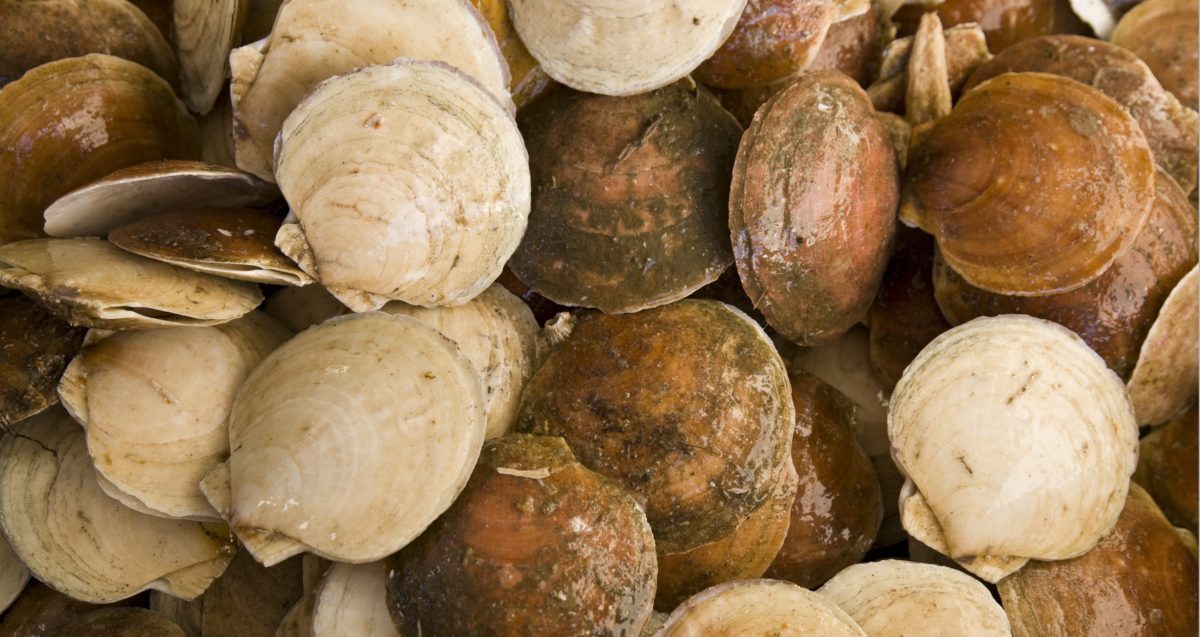
By Doreen Leggett
Warming waters and saltwater intrusions sound worthy of study by oceanographers, but not something that will affect you day to day.
Don’t be too sure.
Intrusions — warm, salty waters that extend shoreward into cold water from the Outer Continental Shelf — can mean big changes for commercial fishermen and coastal communities.
Take scallops. Fisheries managers have set catch levels based on a good crop of scallops in the mid-Atlantic. But at recent meetings, scientists have said the increasing number of saltwater intrusions threatens those scallops.
“The concern is whether young scallops in the Mid-Atlantic will still be there this coming fishing year, or will managers need to be more conservative in their estimates?” said Aubrey Church, policy manager at the Fishermen’s Alliance. “Researchers suspect that environmental drivers, such as temperature, are contributing to higher deaths in the area known as Elephant Trunk.”
It’s happened before. Scallops in areas where temperatures are around 50 degrees have been inundated with water close to 70 degrees. Scallops die at that temperature. Scallops experience mortality at temperatures that exceed 64 degrees.
Woods Hole Oceanographic Institution Senior Scientist Glen Gawarkiewicz has been studying saltwater intrusions. He and a team from the Commercial Fisheries Research Foundation in Rhode Island visited the Fishermen’s Alliance earlier this month talking about research and a new project. The event was one of several held up and down the coast and served as an opportunity to let commercial fishermen know about the work and give researchers the opportunity to find out what fishermen are seeing on the water.
“Things are happening really fast,” Gawarkiewicz said. “The more we can talk, the more we can hopefully influence things.”
Gawarkiewicz began to see changes in the ocean as early as 2012. He was on a research cruise off North Carolina and all the species he expected to see, usually there at that time, weren’t around. The water was 10 degrees warmer than expected; butterfish and bluefish were farther north.
Unexpected warm temperature pockets have accelerated since then. During COVID, Gawarkiewicz was able to take a deep dive into information fishermen had collected, using detailed temperature and salinity data from the top to the bottom of the water column. Those temperature profiles showed water from warm core rings coming shoreward from the Outer Continental Shelf.
Twenty years ago, said Gawarkiewicz, warm water from the Gulf Stream wouldn’t go up the slope of the shelf landward to depths of only 15 fathoms, 90 feet.
“The Gulf Stream has gotten considerably wigglier over 20 years,” Gawarkiewicz said.
Now, warm core rings can extend 50 miles in diameter, and become a different ecosystem island floating in the sea. Research shows the annual formation of warm core rings nearly doubled after 2000.
The rings can have positive benefits because they are productive – one researcher counted 58 sperm whales in one of the streamers, Gawarkiewicz said. In other streamers small fish are so thick the noise they make is louder than the boat’s engines.
They can also be deadly if species cannot escape.
“Lobstermen showed me a time series when it jumped up 13 degrees in one day,” Gawarkiewicz said.
Warm core rings also change where species live in the water column, which can have food web repercussions if a bottom-dwelling predator’s prey now lives closer to the surface.
Hundreds of temperature profiles Gawarkiewicz examined highlight how the Gulf Stream’s relationship to the Outer Continental Shelf has drastically changed.
“The magnitude of these temperature anomalies really concerns me,” he said. “There has been a 68-percent increase in the frequency of intrusions.”
Cape fishermen have seen the changes.
Bill Amaru, a captain from Orleans who has been fishing since the 1970s, was one of about a dozen fishermen in attendance at Gawarkiewicz’s talk in early November.
For the bulk of his career, Amaru and other commercial fishermen were able to catch cod, haddock and flounder. In 2008 he noticed a marked change in the species in his net: more black sea bass and scup, and instead of winter and yellowtail flounder he saw summer flounder or fluke.
Besides market and economic repercussions, there were regulatory issues as well.
“We started seeing fish we had never seen, and we couldn’t keep them because we didn’t have the allocation, we didn’t have the history of catching them,” he said. “Ten years ago, we were going to the Mid-Atlantic to scallop, now those guys are coming up here.”
Before the warming ocean, fishermen would fill the boat’s tank with ocean water on the way in, Amaru said. Now they can’t because the warmer water will kill lobsters.
“And we have to carry a lot more ice,” he said.
Gawarkiewicz and his team are beginning to catalogue changes fishermen have noticed. Using the fishing vessel Dyrsten, they went to areas where mid-depth salinity maximum intrusions had been mapped. They then towed a net to determine what was there.
They discovered species more characteristic of warm waters such as scup, tilefish and butterfish, and many young fish – again not typical. There also were copious amounts of squid, which surprised Gawarkiewicz.
As the team adds underwater autonomous vehicles (AUVs) and continues to make tows in areas where intrusions have been mapped, Gawarkiewicz hopes to incorporate what fishermen are seeing.
“I think only people on the water all the time are aware these changes are happening so quickly,” he said.
